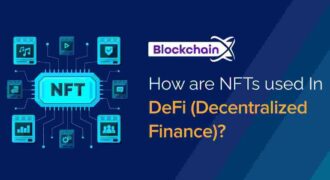Ethereum, the second-largest cryptocurrency by market capitalization, has long been a cornerstone of the blockchain ecosystem. Known for its smart contract functionality, DeFi applications, and NFT platforms, Ethereum continues to evolve rapidly through network upgrades and technological innovations. For investors, understanding these developments is crucial—they impact scalability, transaction costs, security, and ultimately, asset value.
Ethereum’s Evolution: From Proof-of-Work to Proof-of-Stake
One of the most transformative changes in Ethereum’s history is its transition from Proof-of-Work (PoW) to Proof-of-Stake (PoS), a milestone known as The Merge. Completed in September 2022, this shift drastically altered Ethereum’s energy consumption, network security, and staking dynamics.
Key benefits of the transition include:
- Energy Efficiency: PoS reduced Ethereum’s energy consumption by over 99%, making it far more sustainable and environmentally friendly.
- Staking Opportunities: Investors can now stake ETH to earn rewards, creating an incentive to hold rather than trade.
- Security Enhancements: PoS improves network resilience against certain types of attacks, particularly the 51% attacks associated with PoW networks.
The Merge was not just a technological upgrade—it represented a strategic pivot toward scalability, sustainability, and mainstream adoption, signaling Ethereum’s commitment to long-term growth.
Ethereum Layer-2 Solutions and Scalability
Despite the Merge, high gas fees and network congestion remained a challenge for Ethereum users, particularly during periods of peak demand. This gave rise to Layer-2 scaling solutions, which aim to improve transaction speed and reduce costs without compromising decentralization.
Popular Layer-2 solutions include:
- Optimistic Rollups
Platforms like Optimism bundle transactions off-chain and then post a summary to the Ethereum mainnet. This reduces on-chain congestion while maintaining security guarantees. - ZK-Rollups (Zero-Knowledge Rollups)
ZK-Rollups, used by solutions like zkSync, employ cryptographic proofs to validate batches of transactions efficiently. This significantly lowers gas fees and accelerates processing. - Sidechains
Sidechains such as Polygon provide parallel networks compatible with Ethereum, enabling fast, low-cost transactions and fostering ecosystem growth.
For investors, Layer-2 adoption is a key metric, as it directly impacts network usability, transaction volume, and the value proposition for developers and end-users.
Upcoming Ethereum Network Upgrades
Ethereum’s roadmap includes several significant upgrades beyond the Merge, focusing on scalability, security, and usability.
- Sharding
Sharding will divide Ethereum’s blockchain into multiple smaller chains or “shards,” allowing parallel transaction processing. This is expected to dramatically increase throughput, enabling Ethereum to handle thousands of transactions per second without exorbitant gas fees. - The Surge
The Surge refers to upgrades aimed at maximizing Layer-2 efficiency, reducing network congestion, and improving user experience. - The Verge, Purge, and Splurge
These upgrades focus on storage optimization, reducing node size, and enhancing network performance. By minimizing the computational and storage burden, Ethereum becomes more accessible and decentralized.
Investors should monitor these upgrades closely, as enhanced scalability and reduced transaction costs could increase Ethereum adoption, positively influencing ETH’s long-term value.
Impact on DeFi and NFT Ecosystems
Ethereum’s upgrades are particularly relevant for the DeFi and NFT sectors, which rely heavily on fast, low-cost transactions.
- DeFi Protocols: Platforms like Aave, Compound, and Uniswap benefit from lower fees and faster transactions, attracting more users and liquidity.
- NFT Marketplaces: High gas fees have historically limited NFT trading to high-net-worth participants. Layer-2 solutions expand accessibility, encouraging mass adoption of digital art, collectibles, and virtual goods.
- Cross-Chain Integration: Ethereum’s improved scalability facilitates interactions with other blockchains, increasing liquidity and interoperability for DeFi and NFT projects.
For investors, these ecosystem benefits translate into potential growth in usage, transaction fees, and ETH demand, making Ethereum upgrades directly relevant to investment decisions.
Risks and Considerations for Investors
While Ethereum’s evolution presents significant opportunities, there are risks and uncertainties that investors should consider:
- Technical Risks: Upgrades like sharding and Layer-2 integrations involve complex code. Bugs or vulnerabilities could disrupt network functionality.
- Competition from Other Blockchains: Networks like Solana, Avalanche, and Binance Smart Chain offer high throughput and low fees, challenging Ethereum’s dominance.
- Market Volatility: ETH prices remain subject to market sentiment, macroeconomic factors, and regulatory developments.
- Adoption Lag: While upgrades improve functionality, widespread adoption of Layer-2 solutions and new protocols may take time.
- Regulatory Uncertainty: As governments scrutinize cryptocurrencies and DeFi, Ethereum may face evolving compliance requirements impacting investor confidence.
Investors should balance long-term potential against short-term volatility, keeping informed of network developments and adoption trends.
Investment Opportunities Stemming from Ethereum Upgrades
- Staking ETH: Investors can earn passive income by staking ETH on the PoS network, with rewards proportional to the amount staked and network participation.
- Layer-2 Tokens: Projects like Optimism (OP) and Polygon (MATIC) benefit directly from Ethereum’s scalability initiatives.
- DeFi Exposure: Enhanced Ethereum performance supports DeFi protocol growth, offering indirect exposure through tokens or liquidity provision.
- NFT Markets: Lower fees and higher throughput make Ethereum-based NFTs more accessible, potentially driving demand for NFT assets and ETH.
- Infrastructure Projects: Protocols building tools, bridges, and wallets for Ethereum upgrades present investment opportunities in the supporting ecosystem.
By strategically aligning with Ethereum’s technological roadmap, investors can capitalize on both direct and ancillary opportunities in the blockchain space.
Conclusion
Ethereum’s network upgrades and ongoing developments are not just technical milestones—they are critical drivers of adoption, scalability, and market confidence. From the Merge and PoS transition to Layer-2 solutions, sharding, and upcoming optimizations, Ethereum is positioning itself as a more efficient, sustainable, and investor-friendly network.
For investors, understanding these upgrades is essential for:
- Evaluating ETH staking and long-term holding opportunities
- Identifying DeFi and NFT investment potential
- Assessing Layer-2 and cross-chain project exposure
- Anticipating the impact of technological and market risks
Ethereum’s evolution is likely to remain a key determinant of crypto market dynamics. Staying informed and strategically positioned will allow investors to benefit from both network growth and the broader adoption of decentralized finance, NFTs, and blockchain technologies.
Ethereum’s journey underscores a broader truth for crypto investors: technological innovation drives value, and staying ahead of network developments is just as important as monitoring market trends.










